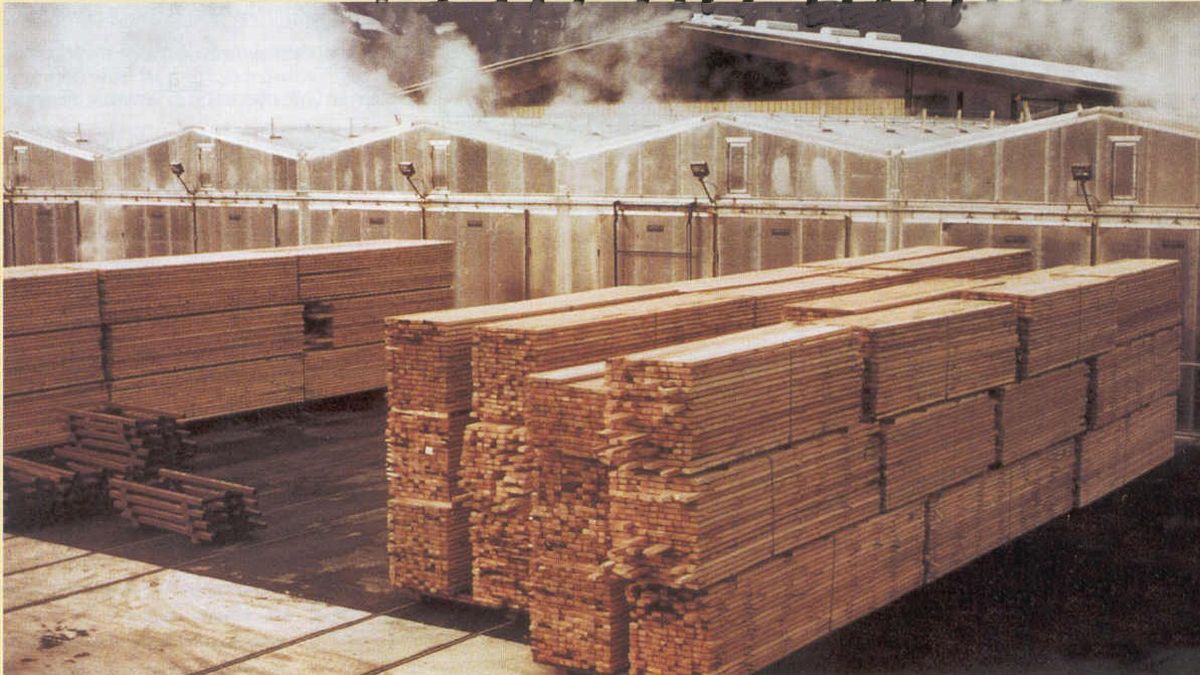He also highlighted the need to address the “very high” demand for training in construction with wood, for works of all types, ranging from premium projects, to houses in countries and works of great magnitude and category, to buildings, tourist complexes, modular houses, among others.
Finally, he proposed to continue advancing in the sector’s efforts to provide financing and insurance servicesseeking to promote large-scale wood construction.
A market that grows with the change in construction habits
“Currently, the wood construction market in Argentina is in a process of sustained growthdespite the difficulties that arise along the way. Compared to 10 or 20 years ago, a significant change can be observed in the demand and supply of constructions with wood,” highlighted Daniel Vier, general secretary of the Argentine Federation of Wood and Related Industries (FAIMA) and president of CADAMDA (Chamber Argentina of Wood Sawmills).
“In fact, a few years ago, wood was not considered a relevant construction material in Argentina and was used mainly for decorative elements or in rural constructions. However, Due to the need to build more efficient and sustainable homes, wood is increasingly popular today in construction and in other markets and sectors,” he concluded.
At this point, the urgency was raised to move forward with wood labeling to ensure the standardization of the quality of the sector’s products and improve competitiveness in the market.
The proposal includes the creation of specific working groups for businessmen interested in this topic. The Argentine Federation of Timber and Related Industries (FAIMA) will carry out a survey among businessmen to identify those interested and coordinate efforts and will also lead the assembly of a private or public seal private to certify wood.
A trend that began in the Nordic countries arrives in Argentina
The wood is a natural and sustainable resource which, due to its speed of response, the available capacity of the forest resource and industrial processing, allows to boost employment and regional economies, adding value to the raw material from cultivated forests as well as clearings. environmental, economic and constructive benefits of the systems used.
It is a value chain that has a multiplier effect from the seed, the plantation, resin and all its derivatives, forest management, harvesting of rolls, destination of fine rolls for cellulose and paper and rolls for sawn wood, use of waste as chips and shavings for renewable energy generation, wood and moldings for construction and housing with wood and furniture, among other uses.
These characteristics of wood were noticed many years ago in nordic countries such as Sweden, Finland or Denmark, which took natural wood as his favorite building element both for its ecological and sustainable properties, and for its thermal characteristics. As in Canada, the United States and much of Europe. Even Australia, Japan and other large metropolises are joining in.
But wood is not only part of architecture, it represents the lifestyle and the culture of northern Europe, as well as Canada and the United States. A way of life that is slowly moving to the south, Confiar maintains.
The keys why wood should win the fight against brick
The Argentine Industrial Forestry Council prepared a list with the 10 keys that place wood as a construction method superior to the traditional one.
1. Ease of construction: Wood framing facilitates a faster and easier construction process compared to other methods. The industrialized nature of wood components allows for efficient on-site assembly, reducing labor costs and project timelines. Ease of construction is a major factor that attracts homeowners looking for a faster turnaround on their construction projects.
2. No limits for design: One of the most notable features of wood frame homes is the flexibility they offer in design. Architects and homeowners can explore complex, aesthetically pleasing designs by taking advantage of the versatility of wood. The adaptability of wood allows for the creation of unique architectural details that may be difficult to achieve with other building materials.
3. Lower environmental impact: Wood, being a renewable resource, aligns with sustainable construction practices. The production of wooden structures requires less energy and generates fewer carbon emissions compared to traditional building materials. Opting for wood structures helps reduce environmental impact and supports green construction methods.
4. Energy efficiency: Wood frame homes are recognized for their excellent energy efficiency. The natural insulating properties of wood effectively regulate indoor temperature, reducing over-reliance on heating and cooling systems. This not only reduces energy consumption, but also results in savings on utility bills for homeowners.
5. Durability: Despite common misconceptions, wood frame homes exhibit exceptional durability. The structural integrity of wood, combined with modern construction techniques, results in residences capable of withstanding diverse climatic conditions and remaining vital for generations. The durability of wooden structures guarantees a long-lasting and resistant housing solution.
6. Health benefits: Wood frame homes contribute to a healthier indoor environment. Wood naturally regulates humidity levels, preventing the growth of mold and mildew. Furthermore, the absence of toxic substances commonly found in other construction materials improves indoor air quality, promoting the well-being of the home’s occupants.
7. Eco-friendly material: Wood stands out as an environmentally friendly material for construction. As a renewable and biodegradable resource, responsible felling and replanting of trees ensures a sustainable supply of wood. The choice of wooden structures is aligned with the commitment to environmental conservation and responsible management of resources.
8. Noise reduction: Wooden frames stand out for their acoustic properties, minimizing sound transmission between rooms. This feature improves the overall comfort and livability of wood-frame homes by reducing unwanted acoustic disturbances. Owners can enjoy a quiet and peaceful living environment.
9. Thermal insulation: The natural thermal insulation properties of wood contribute significantly to the overall energy efficiency of wood frame homes. Insulation helps regulate interior temperature, keeping the house warm in winter and cool in summer. This aspect improves the comfort of living spaces while reducing dependence on mechanical heating and cooling systems.
10. Cost efficiency: While the initial costs of wood framing may be slightly higher, the long-term cost efficiencies are evident. Faster construction times, lower maintenance requirements, and energy savings make wood frame homes a financially sound investment over the life of the building. Homeowners benefit from reduced running costs and a higher return on their initial investment.
Source: Ambito
I’m a recent graduate of the University of Missouri with a degree in journalism. I started working as a news reporter for 24 Hours World about two years ago, and I’ve been writing articles ever since. My main focus is automotive news, but I’ve also written about politics, lifestyle, and entertainment.




